Windows 11/10 has now completely changed the way we use Windows Defender. The new built-in Windows Defender is way better and even looks surprisingly good. The all-new Windows Security is a hub for all your computer’s security settings.
Recently, the Defender on my computer marked some files as viruses and deleted them. I wanted to remove those files from the Quarantine, so I looked around, and surprisingly, I could not find it. But playing around with it for some time got me to the ‘Quarantine’ and some other settings. So here is a short post demonstrating how to remove your files from Quarantine in Windows Defender on Windows 11/10.
Delete or Restore files from Quarantine in Windows Defender in Windows 11
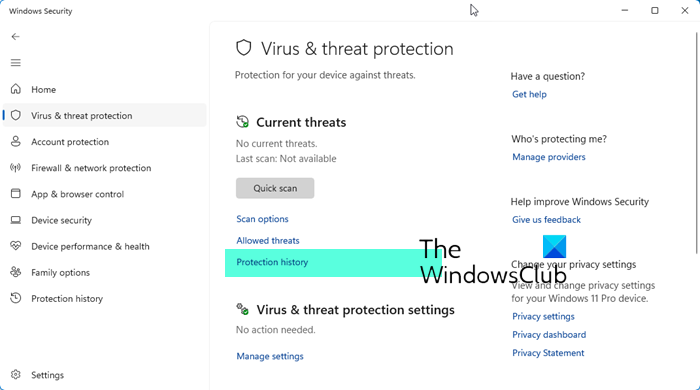
To delete quarantined items in Windows Defender of Windows 11, take these steps:
- Open Windows Security
- Click on Virus & threat protection
- Click on Protection History
- From the Filters drop-down menu, select Quarantined items
- Click on the Quarantined item, and a window will pop up
- Click Yes and you’ll see Action button. Click on it and select Remove.
- You can restore them back by clicking on the Restore button.
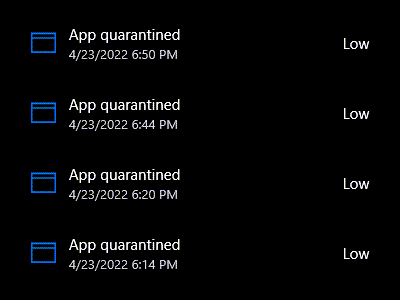
BONUS TIP:
You can also use File Explorer to delete quarantined items.
Open File Explorer, click the View menu at the top and turn on Hidden Items.
Navigate to the following folder, and you will see the quarantined items:
C:\ProgramData\Microsoft\Windows Defender\Quarantine
You can delete the contents of the quarantine folder to remove the items.
Next, go to this folder and delete the contents of the Service folder.
C:\ProgramData\Microsoft\Windows Defender\Scans\History\Service
This will remove the quarantined items and their entry from the list in Defender.
Remove or Restore files from Quarantine in Windows Defender in Windows 10
To remove quarantined items in Windows Defender of Windows 10, take these steps:
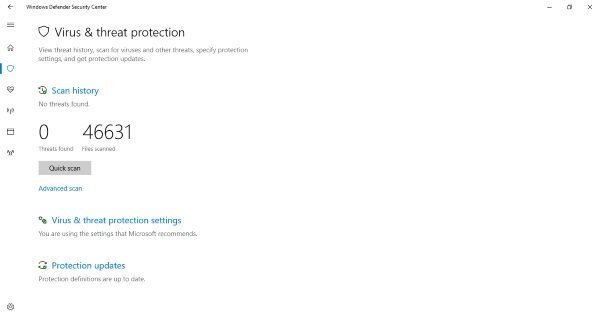
- Open Windows Security from the system tray area.
- Once opened, click on the first menu option that says “Virus & threat protection”.
- Now look for ‘Scan History’ just below the title and description.
- Once you are inside ‘Scan History’, look for ‘Quarantined Items’ and then click on ‘See Full History’ to view all the quarantined items.
- You can easily remove quarantined items by hitting the Remove button. Otherwise, you can restore them back by clicking on the Restore button.
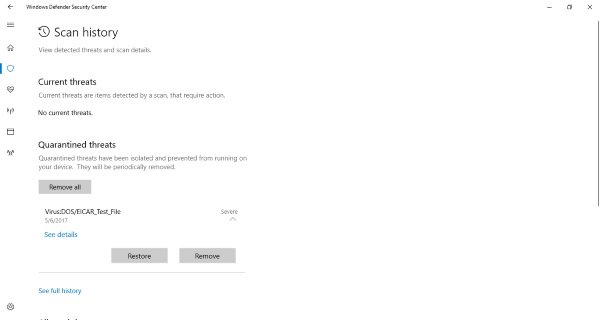
While you can remove files and programs from the ‘Quarantined’ section, you can also add them to ‘Allowed Threats’ as well. There might be some programs or files you trust, but Windows Defender keeps marking them as threats. So, any of such files can be moved to this section, and these files will never be deleted again. Remember if you’ve restored a file and not added it to ‘Allowed Threats’ or ‘Exclusions’, the file may get quarantined again. Dealing with infected files can be risky. Please proceed at your own risk and make sure you can verify the publisher of the file and that you trust it.
There is also something called ‘Exclusions’ in Windows Defender. Exclusions are nothing but a list of files that you do not want to be scanned. Files marked as exclusions will be skipped while performing a virus scan by Windows Defender. To add an exclusion, follow these steps:
How to add Exclusions in Windows Defender
- Open Windows Security from the system tray area.
- Click on ‘Virus & threat protection’.
- Now open ‘Virus and threat protection settings’.
- Click on ‘Manage settings‘
- Scroll to the bottom and find ‘Exclusions’.
- Click on ‘Add or remove exclusions’.
- Now hit the Plus button and choose the type of exclusion you want to add.
In Windows 11, you will see the settings here:
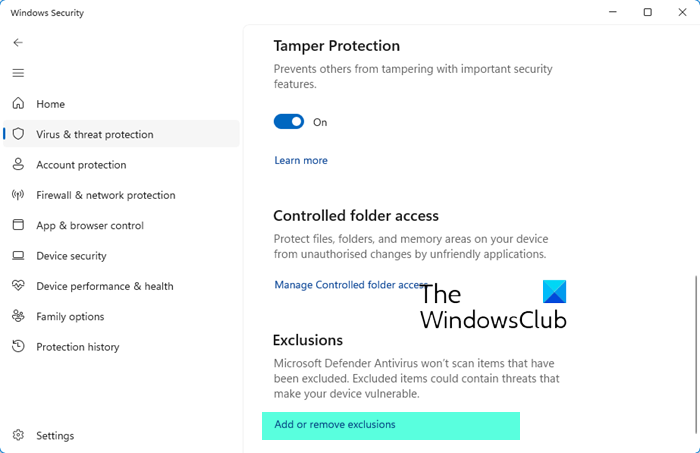
This is how to add the Exclusion. I am taking the example of Windows 10 below for reference.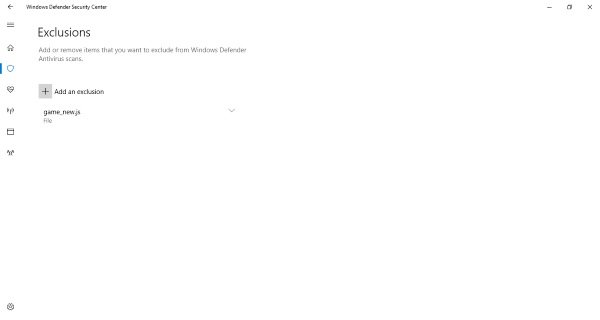
You can add a file, folder, File type, or Process to the Exclusions list.
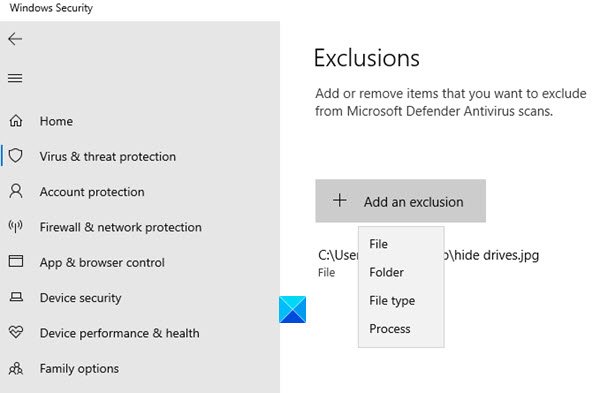
Exclusions can be removed easily as well. All you need to do is click the relevant down arrow and hit the ‘Remove’ button.
So, this was all about quarantined and excluded files on Windows Defender.
This post shows how you can harden Windows Defender protection to the highest levels on Windows by changing a few Group Policy settings.